
Dental care early 20th Century UK
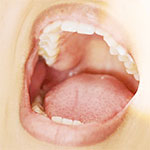
Dental care in the early 20th century was very basic. This page starts with what served for toothbrushes, toothpaste and dental floss, and it goes on to describe dentists’ treatment for bad teeth and why it was always so painful. The descriptions come to life through the recollections of experiences from people who lived in those times.
____
Extracted from the memoirs of the webmaster's mother(1906-2002) and edited by the webmaster with further research
For cleaning teeth: salt, tooth powder and toothpaste
In the early 1900s when I was a child growing up on the working-class Victorian housing estate, everyone I knew cleaned their teeth with salt, which was of course mildly abrasive and was also said to kill germs. Then they rinsed with water.
I understand that slightly better off people cleaned their teeth with a mixture of salt and bicarbonate of soda, which was known as 'tooth powder'. The bicarbonate of soda would have made the salt slightly frothy.
Later there was also commercial tooth powder called Eucryl, but toothpaste was years away.
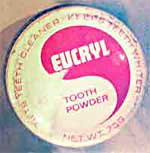
A tin of EUCRYL tooth powder. The inscription round the edge of the tin reads: 'Gets teeth cleaner - keeps teeth whiter'
Toothbrushes and dental floss
Note from the webmaster
Somewhat surprisingly my mother does not describe the toothbrushes of her childhood. According to the internet, they did exist, but being hogs hair set somehow in bamboo or bone, I doubt if they were within the budget of ordinary people. I suspect that merely a finger dipped in salt and rubbed round the teeth had to suffice.
I understand from a retired pharmacist that it was quite common to use twigs of wood as toothbrushes. A twig was cut to expose the soft interior and the outer bark was peeled back slightly. The exposed end was then rubbed onto the teeth, which made it divide into fibres which served as brush bristles. Willow was apparently particularly suitable, although certain other woods could also serve. Presumably the practice was only common in rural areas with easy access to suitable trees.
A length of cotton thread from the household needlework box would have served as dental floss when needed.
By the time of my own childhood in the 1940s, most adults had bad teeth which was possibly the result of this sort of poor dental care.
Toothache and tooth decay
Treatment for toothache
Note from the webmaster
The treatment for toothache for ordinary people seems to have been to pull out the tooth. My father regularly told the following story. He may have been joking, but I don't think so. He said that strong thread was tied round the offending tooth with the other end tied round the handle of an open door. Then the door was slammed shut. I suspect this really may have happened with children's loose milk teeth in large families where money was scarce.
Dentists
Dentists certainly did exist but were probably used as a last resort because of expense and the pain. There was no pain relief. No, none at all.
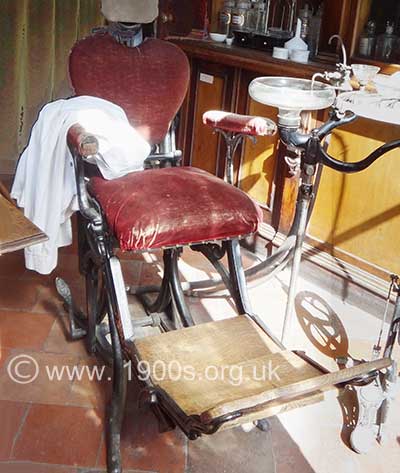
Early 1900s dentist's chair
Dental drills
Drills in the past were treadle drills. The dentist had to keep working his foot up and down to crank the drill. The drills rotated much more slowly and seemed to vibrate the patient's head compared to the modern turbo powered drills of today. They also made a more grinding sound than the modern ones which is more of a whistle. There were no diamond tipped drills like the modern dentists use. Most significantly - they hurt! Really hurt! And because they were so slow, the experience lasted much longer than it would today.
Neil Cryer
Early dentures
I shall never forget one day, as a child, when I overheard a local man saying that he cleaned his teeth with Vim. Vim was an abrasive scouring powder used for scouring pans.
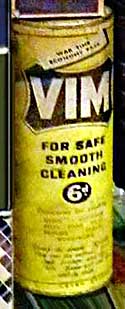
Vim scouring powder
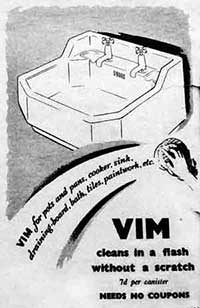
Advert for Vim scouring powder
I thought I would have a go with it - but I only learnt later that he had false teeth made of metal!
My mouth smarted for days afterwards.
Dentures in the 1930s
By the 1930s it was not uncommon for people to be so disillusioned with caring for their teeth and the black and broken appearance of their bad teeth that they had them all out in favour of dentures. Of course it cost them because there was no National Health Service. Some women were actually given this dubious treatment as a 21st birthday present.
Dentistry continually improved throughout the century - see dentistry in the 1940s.
If you can add anything to this page or provide a photo, I would be pleased if you would contact me.
Text and images are copyright
sources: early 20th century material
sources: ww2 home front and other material
contact
the webmaster/author/researcher/editor
privacy policy
















